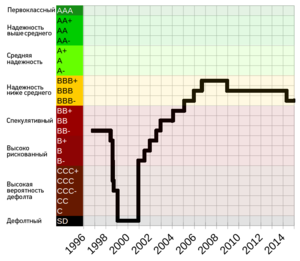التاريخ الاقتصادي لروسيا

بعد انهيار الاتحاد السوڤيتي في 1991 وانهيار الاقتصاد الموجـّه لروسيا، خـُلـِقت روسيا الاتحادية في عهد بوريس يلتسن في 1991. The Russian Federation had multiple economic reforms, including privatization and market and trade liberalization, due to collapse of communism. Though the economy is much more stable compared to the early 1990s, inflation still remains an issue for Russia.
. . . . . . . . . . . . . . . . . . . . . . . . . . . . . . . . . . . . . . . . . . . . . . . . . . . . . . . . . . . . . . . . . . . . . . . . . . . . . . . . . . . . . . . . . . . . . . . . . . . . . . . . . . . . . . . . . . . . . . . . . . . . . . . . . . . . . . . . . . . . . . . . . . . . . . . . . . . . . . . . . . . . . . . .
خلفية تاريخية
For about 69 years, the Russian economy and that of the rest of the الاتحاد السوڤيتي operated on the basis of a centrally planned economy, with a state control over virtually all means of production and over investment, production, and consumption decisions throughout the economy. Economic policy was made according to directives from the Communist Party, which controlled all aspects of economic activity. Since the collapse of Communism in the early 1990s, Russia has experienced difficulties in making the transition from a centrally planned economy to a market based economy.
الانتقال إلى اقتصاد السوق
السياسات النقدية والمحاسبية
التضخم
سعر الصرف
الخصخصة
 مقالة مفصلة: الخصخصة في روسيا
مقالة مفصلة: الخصخصة في روسيا


